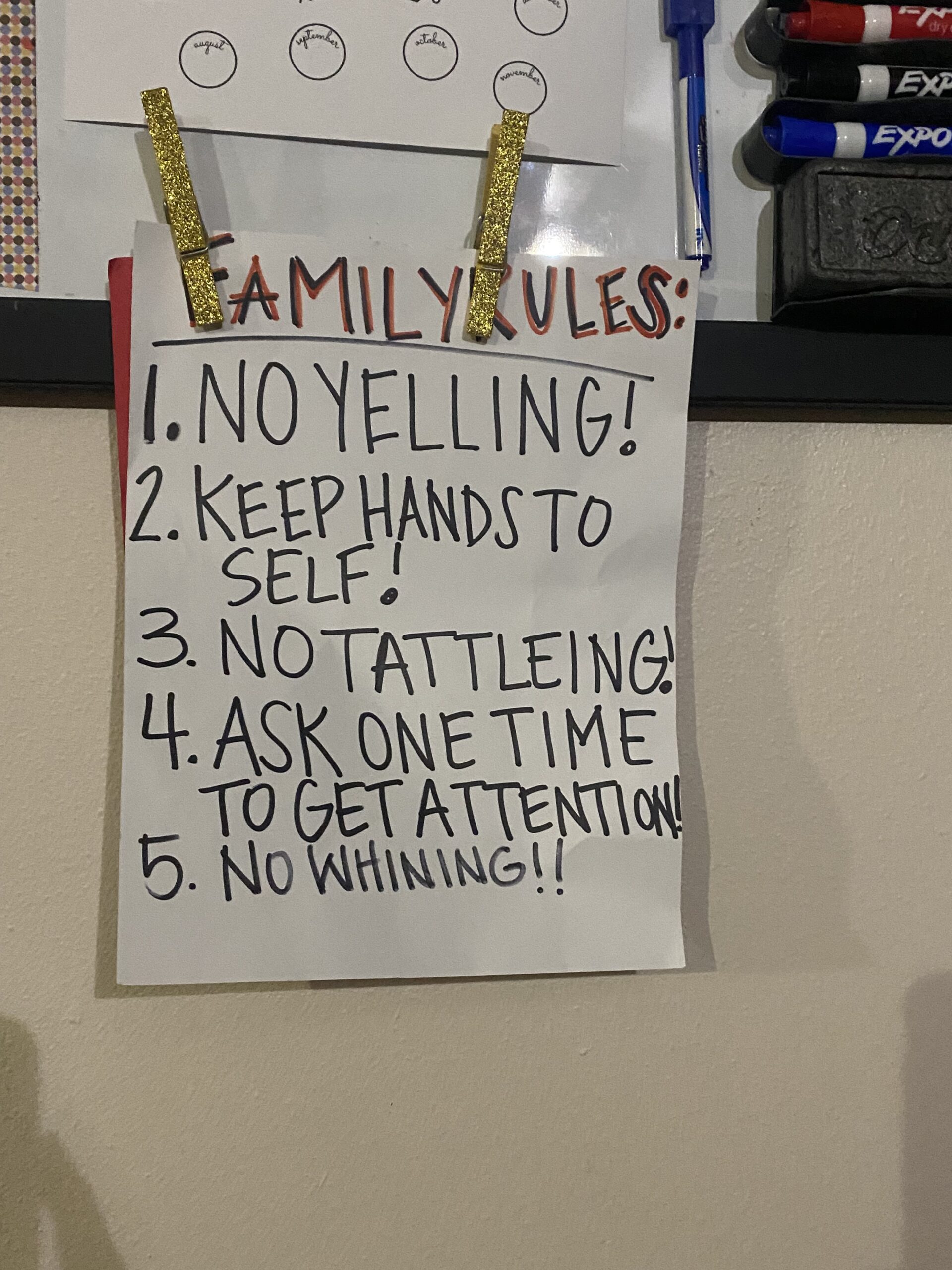Family Rules
We implemented a list of three family rules that were most important to our family. We read them to the kids to let them know the expectations and also the consequences for breaking any of these rules. We’ve been doing this for a few months now and when we realize another rule needs to be added, we add them 1-2 at a time. The rules are posted in our family room for everyone to see. For example, keep your hands and feet to yourself is a family rule—if you don’t do this, you go to the corner for three minutes. Once you get out, you are told why you went and what the consequence will be on your next offense. The biggest thing with the family rules is that they are automatic consequences.
Calming Spot
This is a game changer. This allows our child to have big feelings by himself. It allows him a place he can go to get his feelings under control on his own. It also allows me to not give him attention—good or bad. So tantrums in our house have decreased tremendously because there is no reward whatsoever. If you’re having big feelings(or a tantrum) go to your spot and work it out. There is a floor pillow, blanket, loveys, a few toys like blocks, and some books. In our house, it is tucked behind our bar and truly serves as a spot with some privacy away from the going ons of the house.
Special Playtime
This. This has made allll the difference in our house. It’s ten minutes of playtime between parent and child. It’s truly playtime! You allow your child to pick out two or three toys, go in a spot that’s designated and secluded from everyone else with not a lot of toys that will serve as a distraction. You sit on the floor and you are your child’s play partner. We set a 10 minute timer and when it goes off, special playtime is done. You are not allowed to parent during this time. No demands, no negative comments. Only things like, “oh wow, I loved the way you drove your truck up that hill,” or “I didn’t know you could connect the trailer that way, good thinking!” It allows your child a space that is safe from ridicule and getting in “trouble.” It’s a very challenging thing to do as a parent but if you can carve ten minutes out of your day, 3-4 times a week, I guarantee you will see a difference in your child. This activity is meant to strengthen your connection with your child.
Rewards
Our child acts very positively on rewards. We do not reward daily, however. I try to reward his behavior at school on a weekly basis. Our child loves to go to the gas station on the corner to get candy. If he gets all positive marks at school for the week, we go do that. This is by far his favorite reward. He gets to go in the gas station, browse the aisles and then pick out one piece of candy. Anything he wants. We also do things like going fishing in our pond, riding the four wheeler for 20 minutes after school. It doesn’t have to be something that shakes your pocket book. Get creative, find what works for you.
De-stimulation
Sometimes we have a rare meltdown where our child gets so overstimulated by his environment that nothing works. You can see him escalating to the point of no return. When that happens, nothing works. No calming spot, no amount of talking or discipline. When these kind meltdowns occur, I bring him into a dark room and put on some calming music (usually relaxation music station on Pandora), I get out my lavender oil—rub a little on the inside of his wrists and behind his ears. Then I have to lay next to him and wrap my arms tightly around him. You can feel the point where he deflates and you have a child that you can talk to and reason with comes back. It usually takes about 5 minutes and we can talk about it and go back into the world with a clear mind again.
If you struggle with a child that literally pushes every button in your body. A child that you just don’t understand why they do what they do or act the way they do. A child that has big feelings and emotions that sometimes embarrasses you as a parent. Rest easy tonight knowing you are not alone. Know that it’s not your fault, know that there are more parents than you know that struggle with this type of behavior. I can only hope that if you made it to the end of this blog, I at least gave you one thing that you can try at home with your child, that makes your journey easier. Hang in there and know that consistency is your key to success.



















